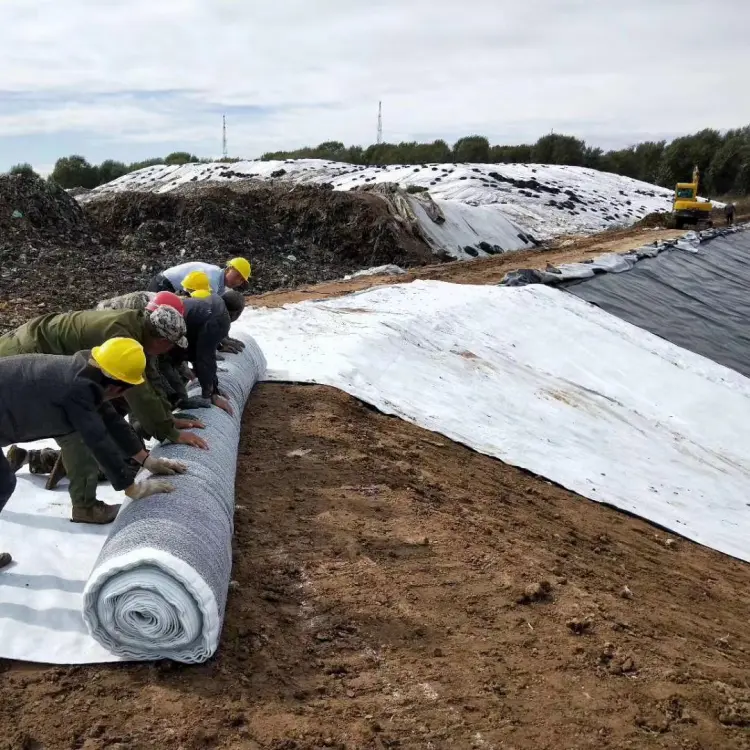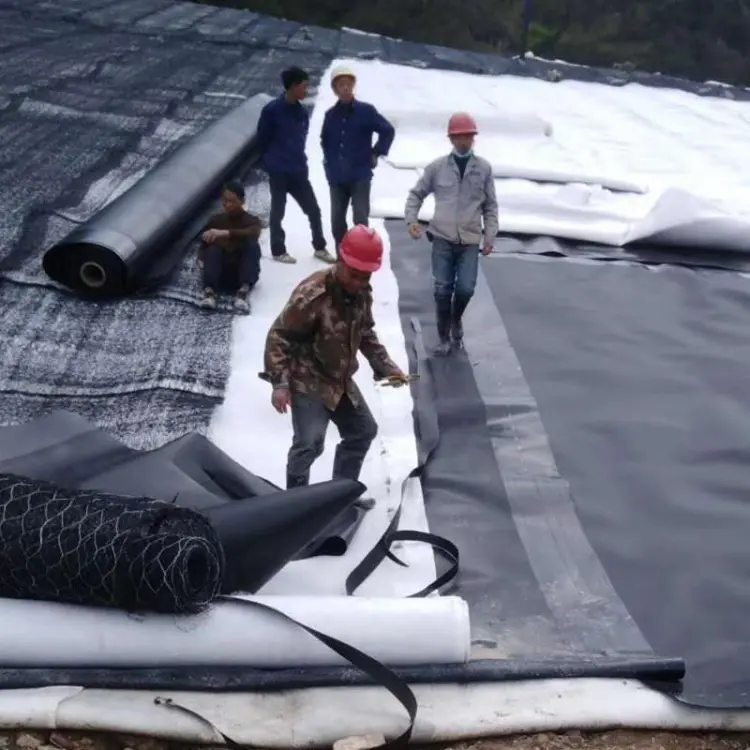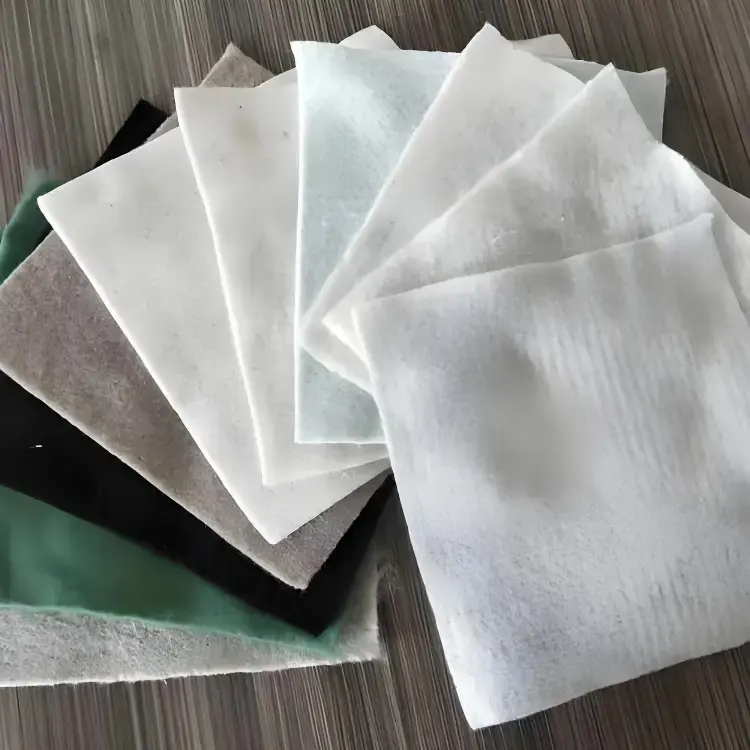In modern landfill construction, geosynthetic clay liners (GCL) have become the preferred impermeable material for most projects due to their unique performance and advantages. The following analysis details the reasons for their widespread application.
1. Exceptional Impermeability
GCL utilizes sodium bentonite’s swelling properties upon water contact to achieve impermeability, with a typical permeability coefficient of approximately 1×10⁻⁹ cm/s. This low permeability effectively prevents landfill leachate from polluting surrounding soil and groundwater environments. Additionally, GCL exhibits high shear strength and settlement resistance, enabling it to adapt to uneven settling in landfills.
2. Construction Convenience and Efficiency
GCL installation is relatively simple, typically involving straightforward laying procedures without complex equipment or processes. Its fast construction speed significantly shortens project timelines and reduces costs. GCL also offers excellent flexibility, allowing it to conform to complex terrain and landfill structures.
3. Environmental Friendliness and Sustainability
GCL is manufactured from natural clay materials, minimizing environmental harm. Its primary component, sodium bentonite, is a natural mineral with strong eco-friendly properties. In landfill closure and ecological restoration, GCL effectively reduces leachate migration, protecting groundwater and soil environments.

4. Significant Cost Efficiency
Although GCL material costs are slightly higher than traditional clay liners, its rapid installation and low maintenance translate to substantial overall benefits. In full lifecycle cost calculations, GCL can achieve savings of up to 50%. Moreover, its long service life reduces long-term maintenance expenses.
5. Regulatory and Standards Support
According to the “Standard for Pollution Control on Municipal Solid Waste Landfills” (GB16889-2008), landfills must employ composite liner systems for impermeability. GCL serves as a key component in these systems, meeting regulatory and standard requirements. This policy backing further drives GCL’s extensive adoption in landfills.
6. Practical Application Cases
GCL’s effectiveness has been validated in multiple modern landfill projects. For example, after implementing GCL as an impermeable material at one landfill, leachate migration was effectively controlled, and surrounding environmental conditions improved markedly. GCL also demonstrates strong impermeability in tailings ponds and other containment facilities.
Summary
Geosynthetic clay liners (GCL) are widely used in modern landfills due to their outstanding impermeability, construction convenience, environmental sustainability, cost efficiency, and regulatory support. Successful applications in real-world engineering projects further confirm their reliability as an impermeable material.

